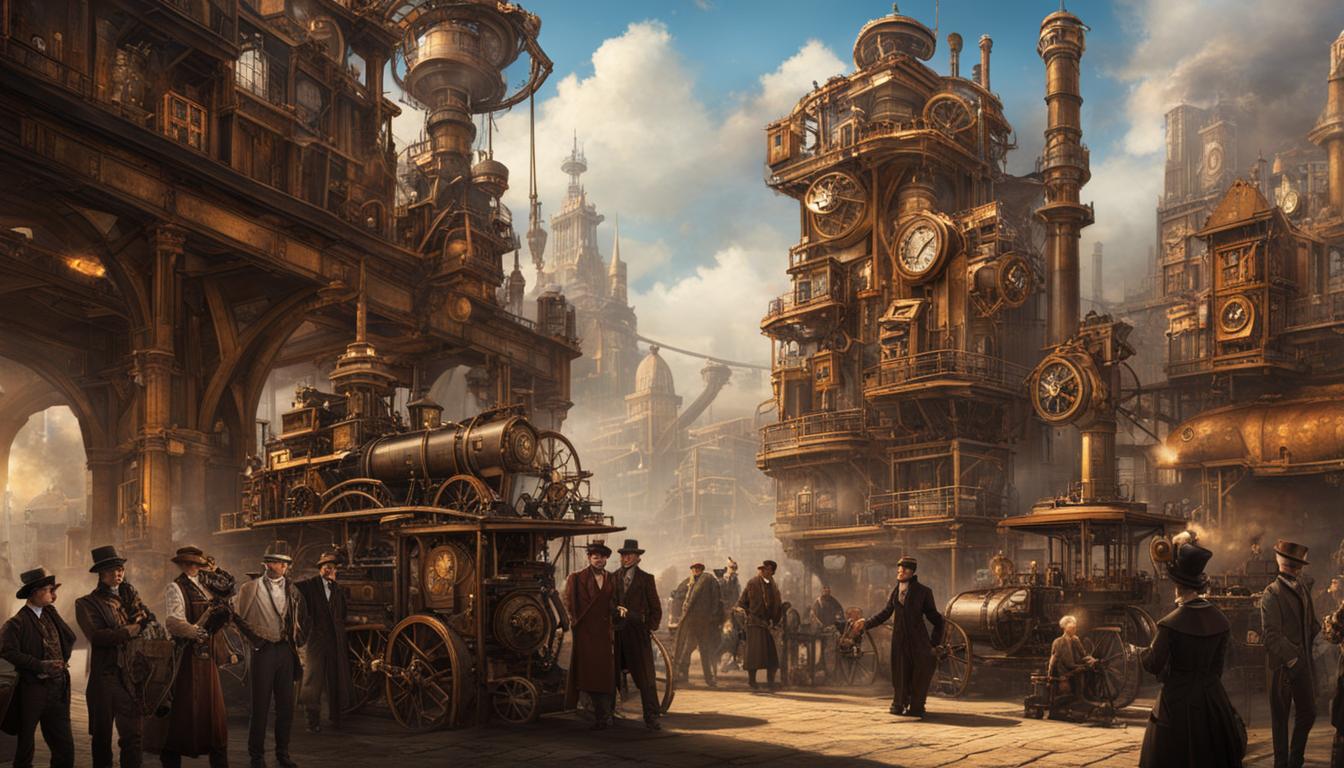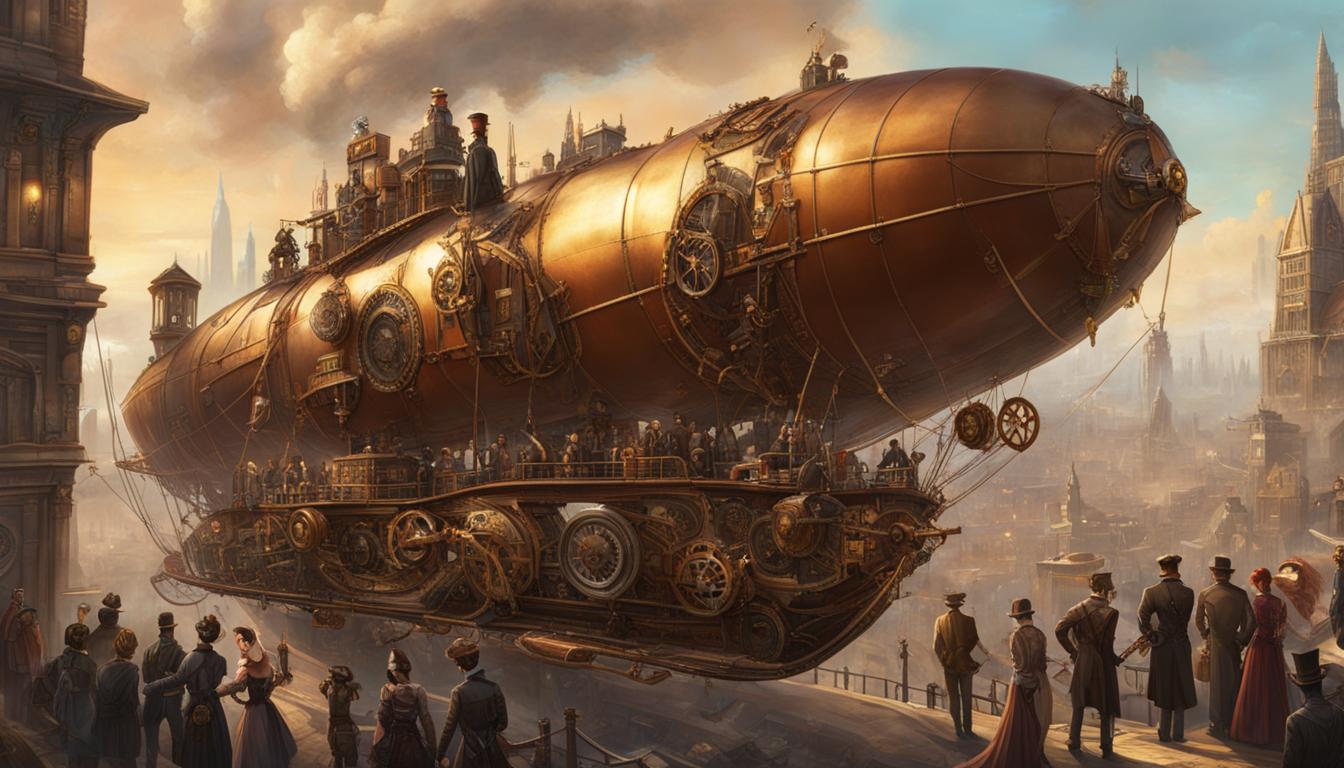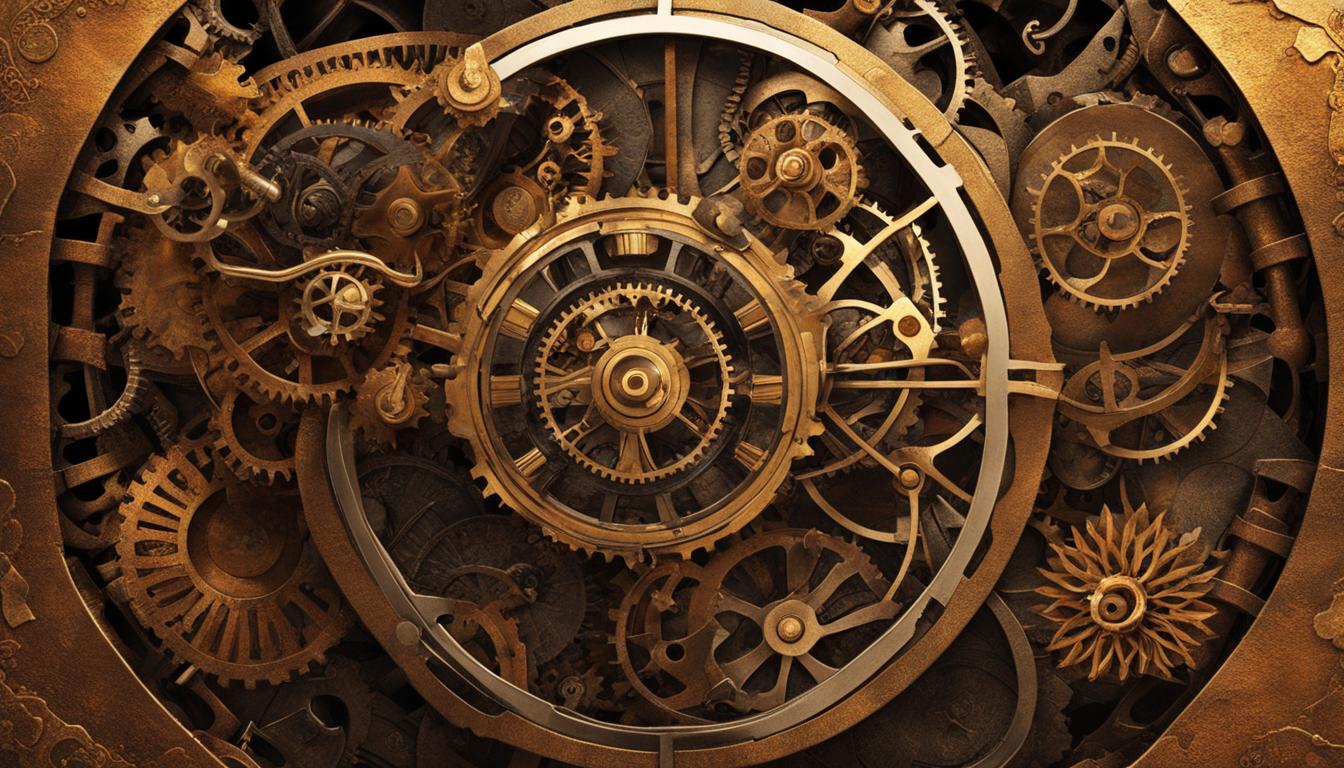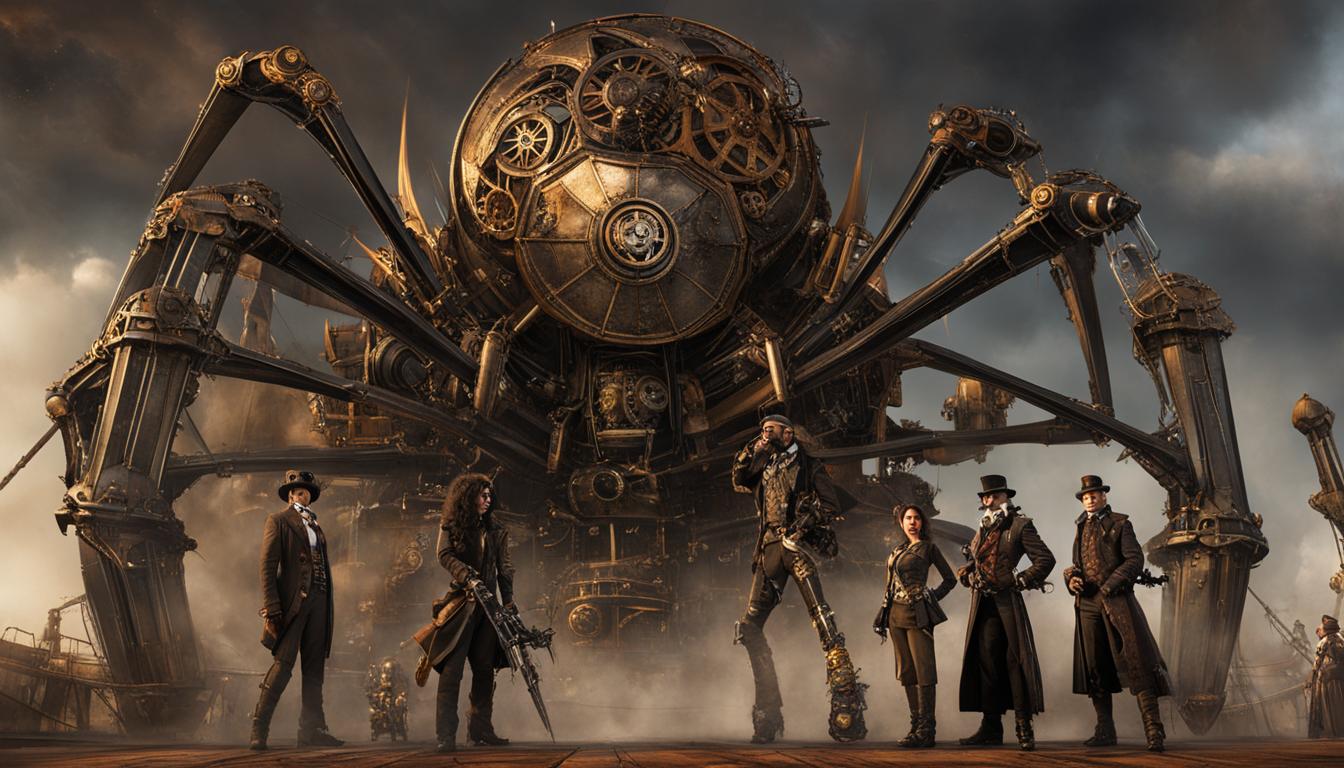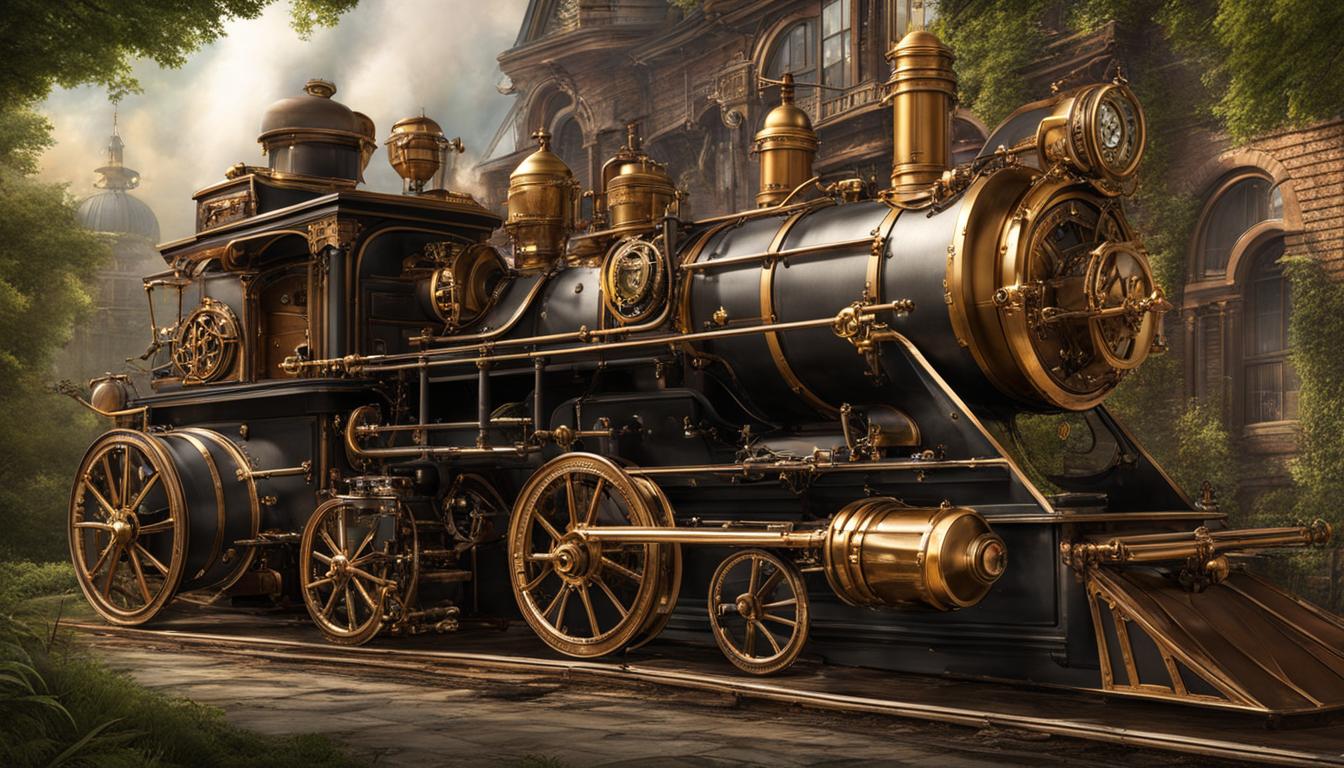Steampunk, a subculture that blends Victorian aesthetics with futuristic technology, is more than just a style or a trend. It is a community that upholds a set of core philosophical values that guide their actions and interactions.
Steampunk enthusiasts are not merely fashion enthusiasts or technology enthusiasts; they are individuals who believe in ethical principles and champion a unique set of core values. These values include a commitment to inclusivity and diversity, a deep respect for individuality, and a strong focus on creativity and ethics in all aspects of their lives.
Key Takeaways:
- Steampunk communities uphold core philosophical values.
- These values include commitment to inclusivity, diversity, and respect for individuality.
- Steampunk culture promotes creativity and ethics in all aspects.
- Examination of Eurocentrism and whiteness in steampunk iconography has shed light on the need for more inclusive narratives.
- Steampunk provides a platform for philosophical debates and discussions.
Steampunk’s Emphasis on Creativity and Ethics
Steampunk culture is defined by its strong emphasis on creativity and ethics. Within the steampunk community, individuality and self-expression are highly celebrated. Members express their unique identities through their fashion choices, art, and craftsmanship. The blending of Victorian aesthetics with futuristic elements allows for endless possibilities and encourages individuals to push the boundaries of their imagination.
Furthermore, the steampunk community places a great value on mutual respect and appreciation. Steampunk festivals and gatherings provide platforms for philosophical debates and discussions, where participants can engage in thoughtful conversations about societal issues and ethical dilemmas. These events foster a sense of intellectual engagement and personal growth within the community.
“Steampunk is more than just a fashion trend or a subculture; it’s a way of life,” says Eleanor Williams, a dedicated steampunk enthusiast.
It’s about celebrating individuality and embracing the spirit of invention and creativity. Through our shared passion for steampunk, we build connections and create a vibrant community that values respect and mutual appreciation.
Steampunk Festivals: A Hub for Creativity and Intellectual Engagement
Steampunk festivals serve as a perfect reflection of the community’s emphasis on creativity and ethics. These events bring together individuals from all walks of life, united by their love for the genre. From costume competitions to art exhibits, these festivals showcase the incredible talents and ingenuity of steampunk enthusiasts. They also provide a platform for philosophical debates, where participants can dive deep into discussions about the ethical implications of technology, societal structures, and cultural representation.
The steampunk community constantly pushes the boundaries of creativity and encourages individuals to think critically about the world around them. By embracing a culture that values both imagination and ethics, steampunk enthusiasts have created a unique and thriving subculture that celebrates individuality and fosters a sense of community.

| Steampunk’s Emphasis on Creativity and Ethics | Values of respect and mutual appreciation | Steampunk Festivals promoting Philosophical Debates | Celebrating Individuality in Steampunk Culture |
|---|---|---|---|
| Steampunk culture celebrates individuality and self-expression through unique fashion, art, and craftsmanship. | The community values mutual respect and appreciation, fostering a welcoming environment. | Steampunk festivals provide platforms for engaging in philosophical debates and discussions. | Steampunk culture embraces the celebration of diverse identities and encourages personal growth. |
| Steampunk events showcase the talents and ingenuity of enthusiasts, pushing the boundaries of creativity. | Participants engage in intellectual dialogue about the ethical implications of technology and societal structures. | The community fosters a sense of community and connection through shared passion. | Steampunk culture encourages critical thinking and challenging mainstream narratives. |
Steampunk’s Commitment to Inclusivity and Diversity
Inclusivity and diversity are at the core of steampunk communities, which actively champion the inclusion of individuals from all backgrounds. Steampunk culture goes beyond mere tolerance and strives to create a welcoming and safe environment where everyone feels accepted and celebrated. This commitment to inclusivity is a testament to the progressive values that define the steampunk movement.
Within steampunk communities, diversity is seen as an asset rather than a hindrance. The richness of perspectives and experiences fostered by a diverse community fuels creativity and sparks new ideas. Steampunk events and gatherings provide a platform for individuals from different backgrounds to come together, share their unique stories, and challenge societal norms. By championing diversity, steampunk communities not only create a more inclusive culture but also contribute to a more equitable society as a whole.
“Steampunk is about embracing the diversity of the world and reimagining history,” says [expert name], a prominent figure in the steampunk community. “It’s not just about celebrating the past; it’s about envisioning a future where everyone is represented and valued.”
The commitment to inclusivity and diversity in steampunk extends beyond the community itself. Steampunk enthusiasts actively advocate for social justice causes and use their platform to raise awareness about issues such as gender equality, racial justice, and LGBTQ+ rights. They challenge the status quo and strive for a more inclusive and equitable society, both within the steampunk world and in the wider world beyond.
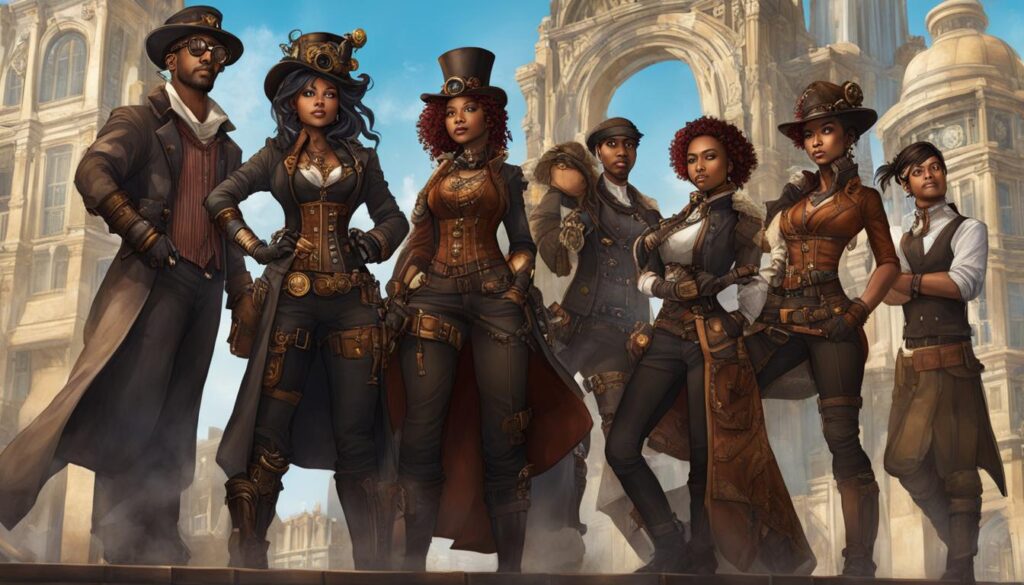
Steampunk’s Commitment to Inclusivity and Diversity
Inclusivity and diversity are fundamental values championed in steampunk communities. Steampunk culture actively promotes the inclusion of individuals from all backgrounds, regardless of gender, race, or sexual orientation. Steampunk events and gatherings strive to create a welcoming and safe environment where everyone feels accepted and celebrated. By championing diversity, steampunk communities challenge societal norms and promote a more inclusive and equitable society.
Steampunk’s commitment to inclusivity and diversity goes beyond mere representation. It’s about creating spaces where marginalized voices are amplified and empowered. Steampunk enthusiasts encourage and support artists, writers, and creators from underrepresented communities, providing them with opportunities to showcase their work and share their unique perspectives. By doing so, steampunk communities actively contribute to the dismantling of systemic barriers and the creation of a more diverse and inclusive cultural landscape.
“Inclusivity is not just a buzzword in steampunk; it’s a non-negotiable value,” says [expert name], a prominent figure in the steampunk community. “We believe that everyone’s experiences and stories matter, and we are committed to creating spaces where everyone is seen, heard, and valued.”
Steampunk’s commitment to inclusivity and diversity also extends to the values and themes explored within the genre itself. Steampunk literature, art, and fashion often challenge traditional power structures and explore alternative histories that center marginalized communities. By reimagining the past through a steampunk lens, the genre allows for the exploration of narratives that have been historically overlooked or ignored.
The Intersection of Eurocentrism, Whiteness, and Multiculturalism in Steampunk Iconography
Steampunk, with its fusion of historical aesthetics and speculative technology, has become a vibrant cultural movement that draws enthusiasts from diverse backgrounds. However, there has been a growing examination of Eurocentrism and whiteness in relation to multiculturalism within steampunk iconography and cultural production. As steampunk emerged from a neo-Victorian aesthetic, it often reproduced the Eurocentric lens through which history has traditionally been portrayed. This has raised concerns about the representation of multicultural narratives in the genre.
Eurocentrism, which centers Europe as the site of progress and cultural dominance, has influenced the mainstream narratives of steampunk. Similarly, the representation of whiteness, which symbolizes structural advantage, has been prominent in steampunk iconography. This has resulted in the marginalization of non-European cultures and perspectives within the genre. Multicultural steampunk, despite aiming to incorporate diverse narratives, continues to center whiteness and maintain mainstream Eurocentric sensibilities.
“Steampunk, in its current form, perpetuates a narrative that reinforces Eurocentrism and the dominance of whiteness,” says Dr. Olivia Santiago, a cultural studies scholar. “To truly embrace multiculturalism, steampunk needs to critically examine and challenge these underlying power dynamics.”
Reimagining Steampunk: A Radical Multiculturalist Approach
There is a call for a more radical multiculturalist approach in steampunk that challenges the Eurocentric and whitewashed narratives and centers the perspectives and production of historically marginalized communities. This reimagining of steampunk seeks to offer alternate histories that resist the mainstream narrative and provide a platform for underrepresented voices.
By actively diversifying steampunk iconography and cultural production, a broader range of narratives can be explored. This involves highlighting the contributions of non-European cultures, celebrating cultural hybridity, and redefining the boundaries of what is considered “steampunk.” This radical multiculturalist approach encourages steampunk enthusiasts to critically engage with issues of power, privilege, and representation, fostering a more inclusive and equitable culture within the steampunk community.
| Eurocentric Steampunk Iconography | Radical Multiculturalist Steampunk Iconography | |
|---|---|---|
| Representation | Primarily Eurocentric, with limited representation of non-European cultures. | Multicultural representation that encompasses a diverse range of cultures and perspectives. |
| Power Dynamics | Maintains mainstream power dynamics and centers whiteness. | Challenges power dynamics by centering historically marginalized communities and resisting Eurocentrism. |
| Visual Aesthetics | Traditional Victorian and Industrial Revolution aesthetics with a Eurocentric lens. | Hybrid aesthetics that blend diverse cultural elements with steampunk themes. |
The reimagining of steampunk through a radical multiculturalist lens offers an exciting opportunity to challenge the status quo and create a more inclusive and diverse cultural movement. By critically examining the intersection of Eurocentrism, whiteness, and multiculturalism, steampunk can evolve into a space where marginalized voices are amplified, alternative narratives are celebrated, and new visions for the future are realized.
![]()
Conclusion
Steampunk communities embody a unique set of philosophical values that make them truly exceptional. The core values championed in these communities revolve around inclusivity, individuality, creativity, and ethics. Steampunk enthusiasts strive to create an environment that celebrates diversity and fosters a sense of belonging for everyone involved.
Celebrating individuality is at the heart of steampunk culture, where participants express themselves through their fashion choices, artwork, and craftsmanship. The emphasis on mutual respect and appreciation allows for a vibrant exchange of ideas and perspectives, creating a rich intellectual landscape within these communities.
Furthermore, steampunk’s commitment to inclusivity is unparalleled. Regardless of gender, race, or sexual orientation, steampunk events prioritize creating a safe and welcoming space for all individuals. By challenging societal norms and advocating for a more equitable society, steampunk communities serve as beacons of progress and acceptance in the wider world.
In conclusion, the philosophical values upheld in steampunk communities are the guiding principles that fuel their vibrant culture. By embracing individuality, promoting inclusivity, and fostering creativity and ethics, these communities pave the way for a more diverse and harmonious society. Steampunk truly embodies the spirit of innovation, celebration, and inclusivity that continues to captivate enthusiasts around the world.
FAQ
What are the core philosophical values upheld in steampunk communities?
Steampunk communities uphold a commitment to inclusivity and diversity, respect for individuality, and a focus on creativity and ethics.
How does steampunk culture emphasize creativity and ethics?
Steampunk enthusiasts celebrate individuality and express themselves through unique fashion, art, and craftsmanship. They value mutual respect and appreciate diverse perspectives within the community. Steampunk festivals provide a platform for philosophical debates and discussions, fostering creativity and encouraging ethical considerations.
What is the commitment to inclusivity and diversity in steampunk communities?
Steampunk culture actively promotes the inclusion of individuals from all backgrounds, regardless of gender, race, or sexual orientation. Steampunk events and gatherings strive to create a welcoming and safe environment where everyone feels accepted and celebrated, challenging societal norms and promoting a more inclusive society.
How does Eurocentrism and whiteness intersect with multiculturalism in steampunk iconography?
Steampunk, originally rooted in a neo-Victorian aesthetic influenced by Eurocentrism, has raised concerns about the representation of multicultural narratives. There is a growing examination of how mainstream steampunk narratives center on whiteness and maintain Eurocentric sensibilities. This has led to a call for a more radical multiculturalist approach that prioritizes the perspectives and production of historically marginalized communities, offering alternate histories that resist the mainstream narrative.

